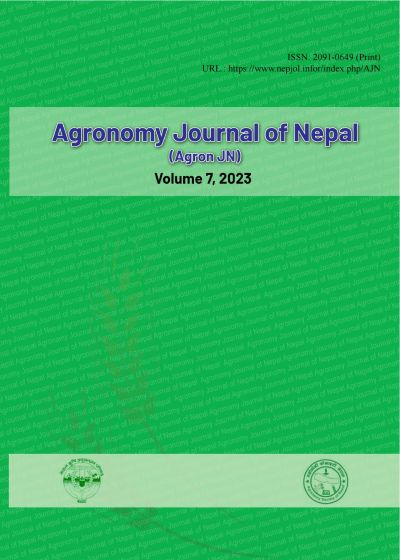Direct Seeded Rice Might Be One of the Potential Climate Smart Agricultural Technologies in Nepal
DOI:
https://doi.org/10.3126/ajn.v7i1.62062Keywords:
Direct seeded rice, climate smart, adoption, Wheat yieldAbstract
The conventional system of puddled transplanting of rice (PTR) with intensive tillage is common practice of rice growing in Nepal. It has many negative impacts on soil, water, labor, climate change and gender equality. Therefore, an alternative production system has been explored. Direct seeded rice (DSR) has been one of the potential systems of rice production in Nepal. The results of various studies on DSR revealed that it saves labor, requires less water, less drudgery, less energy, early crop maturity, low cost of production, better soil physical conditions and less greenhouse gas emission. The grain yields in DSR are comparable with PTR. However, special attentions must be given in selection of suitable cultivars, appropriate time of sowing, optimum seed rate, proper weed and water management practices. Despite its promise, the rate of its adoption is not as expected. It might be due to some of the constraints associated it. In this paper an attempt has been made to highlight the works done in DSR within and outside of the country, its constraints and the possible solutions to scale-out it.
Downloads
Downloads
Published
How to Cite
Issue
Section
License
Copyright (c) 2023 Agronomy Society of Nepal (ASoN)

This work is licensed under a Creative Commons Attribution-NonCommercial 4.0 International License.
ASON permits for free use, distribution and reproduction in any medium if the original work is properly cited and not used for commercial purposes.




